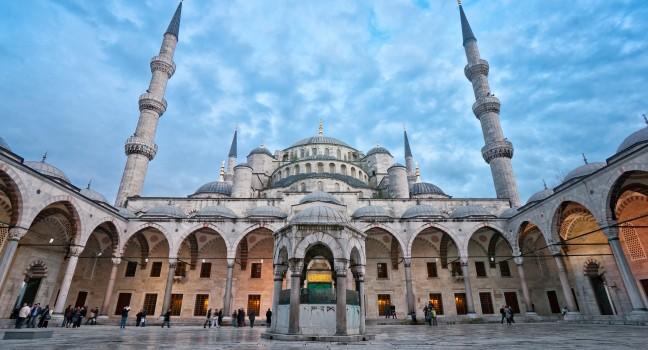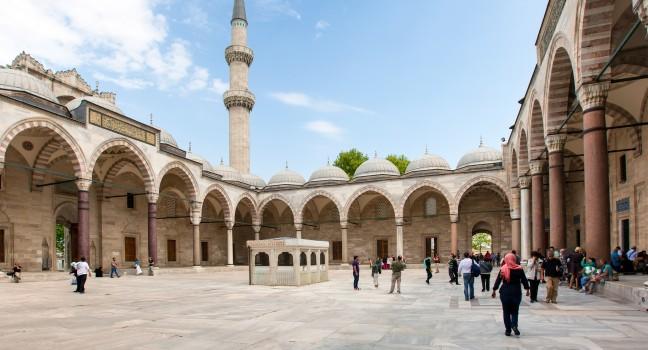Blue Mosque

Only after you enter the Blue Mosque do you understand its name. The inside is covered with 20,000 shimmering blue-green İznik tiles interspersed with 260 stained-glass windows; calligraphy and intricate floral patterns are painted on the ceiling. After the dark corners and stern faces of the Byzantine mosaics in Aya Sofya, this mosque feels gloriously airy and full of light. Indeed, this favorable comparison was the intention of architect Mehmet Ağa (a former student of the famous Ottoman architect Sinan), whose goal was to surpass Justinian's crowning achievement (Aya Sofya). At the behest of Sultan Ahmet I (ruled 1603–17), he created this masterpiece of Ottoman craftsmanship, starting in 1609 and completing it in just eight years, and many believe he indeed succeeded in outdoing the splendor of Aya Sofya.
Mehmet Ağa actually went a little too far, though, when he surrounded the massive structure with six minarets: this number linked the Blue Mosque with the Masjid al-Haram in Mecca—and this could not be allowed. So Sultan Ahmet I was forced to send Mehmet Ağa down to the Holy City to build a seventh minaret for al-Haram and reestablish the eminence of that mosque. Sultan Ahmet and some of his family are interred in the türbe (mausoleum) at a corner of the complex.
From outside of the Blue Mosque you can see the genius of Mehmet Ağa, who didn't attempt to surpass the massive dome of Aya Sofya across the way, but instead built a secession of domes of varying sizes to cover the huge interior space, creating an effect that is both whimsical and uplifting. Note that, as of this writing, the Blue Mosque is undergoing an extensive restoration. Although it remains open to the public (except during services), some of the interior details might be blocked by scaffolding.




